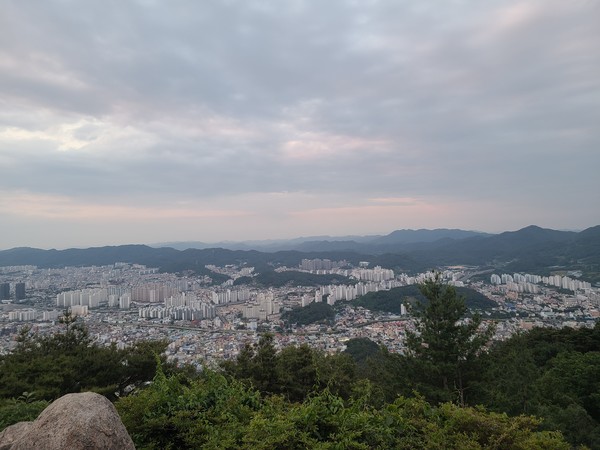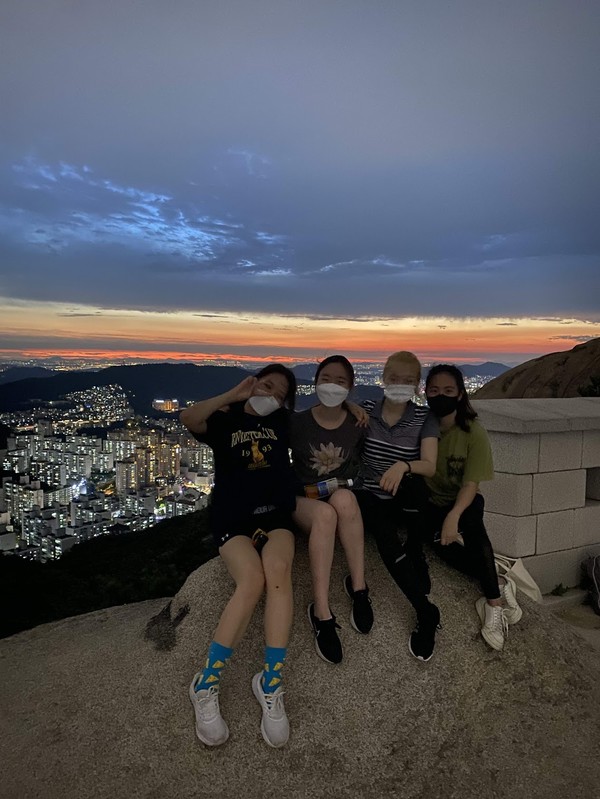As the scorching heat of summer dies down, the sky is ever so high and clear; the breeze becomes cooler, and the leaves stain themselves in shades of red and yellow — it’s time to go on a hike.

Hiking is a pretty common pastime, almost a tradition, in Korea. From a young age, kids are led up low mountains by their dads to take “quick walks”. Elementary school picnics are held in neighborhood hills referred to as dwitsans, lunch dosiraks packed and dotjaris (mats) laid under the pine trees. For older students, school excursions also involve hiking. Hallasan Mountain and Seongsan Ilchulbong are must-go tourist locations for family trips to Jeju Island; most Koreans have probably visited Seoraksan Mountain at least once in their lives; and famous temples or caves are often located on the top of hills, making at least a short hike inevitable. While people in their 20s or 30s tend to have a lowered enthusiasm for hiking, many ahjummas and ahjussis seek out hiking again, joining hiking clubs or enjoying strolls to the dwitsan on their own.
What makes hiking an integral part of Koreans’ lives is the geographical accessibility of mountains. Approximately 70% of Korean territory is made up of mountains or hills, meaning that mountains are always close by, even in coastal cities. This availability is probably where the term “dwitsan” originated from. At the same time, Korean mountains are not very high in altitude. The highest mountain, Hallasan, has an elevation of 1,947 m, which is only around 40% as high as Alpine peaks. The average altitude of Korea is only 482 m, which is unexpectedly low considering the number of mountains that make hiking an unburdensome and light activity. Along with this, the trails up mountains are well-polished, with stairs often installed for steeper slopes. A variety in the available courses, ranging from a length of just one hour to several hours, allows people to choose one that is most enjoyable depending on their level of fitness.
At the same time, the hiking culture in Korea also represents social pressure to some degree. Group hikes in the fall season are often initiated by higher ranking members of companies, to which other employees are expected to attend regardless of their willingness. The hiking course must suit the boss’s tastes; not too difficult, but not too easy, either. Thus, hiking almost enforces the existing hierarchical nature of organizations. On a slightly different note, social pressure is also evident through hiking wear. If you happen to take a bus at Seoul National University, take a look around — you might see groups of people, all dressed in brightly colored jackets, wearing wide-brimmed hats, and carrying a pair of hiking sticks on their way to Gwanaksan Mountain. No matter how low the altitude of the hill is, you would find at least a couple hikers in full gear. These gear could cost up to a few hundred thousand KRW each if purchased from known brands. In turn, the sportswear market in Korea is large and growing: it amounted to 5.79 trillion KRW in 2021 according to Statista, and around 45 million USD worth of hiking gear was imported in 2022. It seems odd to be spending that much just to go up a low hill. But carrying flashy hiking gear is considered a chance for more regular hikers to show off their hiking experience to fellow hikers. Those allegedly more experienced insist on the importance of having hiking sticks or wearing the proper type of long pants, at times even explicitly commenting on random people’s “inappropriate” attire.
Nevertheless, hiking is undoubtedly a wholesome hobby to have. Walking mindlessly up through the trees, breathing in the fresh air, and feeling the tranquility of nature soothes our minds fatigued from our busy daily lives. Experiencing the rush of satisfaction and achievement upon reaching the peak further embeds the love of hiking. Going with family, friends, or other like-minded people may enhance that enjoyment and provide a time of bonding. Conversations might sprout during water breaks, and even without much verbal interactions, sharing that time together and wordlessly encouraging each other through the hike creates a sense of unity.

What makes hiking in Korea especially more special are the cultural aspects that blend in. The beauty of the fall scenery, both in the mountains and looking down at the city from the peak, is familiar yet strangely impressive. Scooping up and drinking cool mountain water from the yaksuteo (springs) with gourd buckets, yelling “ya-ho” at the peak, and having Korean pancakes with makgeolli on the way down are all part of the charms of hiking.
It seems that hiking is embedded in the subconscious for many Koreans; at some point in life, the urge to go hiking just pops out of nowhere. When you feel that urge, why not go for a short hike?

